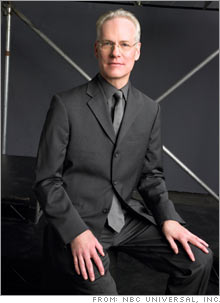'Project Runway' meets Liz ClaiborneAn interview with Tim Gunn, chief creative officer, Liz Claiborne.(Fortune Magazine) -- As the mentor to young designers on cable reality hit Project Runway and a teacher at Parsons School of Design for 24 years, Tim Gunn has cultivated some of the top talent in American fashion. But in March, Gunn took on a new challenge, becoming chief creative officer at Liz Claiborne, whose 40 brands include Kate Spade, Juicy Couture and Lucky jeans. Gunn's mission is to reinvigorate the struggling $5 billion company, whose profits fell 20 percent in 2006. Gunn recently spoke to Fortune's Christopher Tkaczyk about his new employer, his forthcoming book and why men should avoid wearing pleats. Over the past decade the Liz Claiborne (Charts) label seems to have lost its way. Isn't it dowdy?  Before I came into the company, I absolutely shared your perception, and it's the perception of many people still. But there's a new design team in place at Liz headed by Richard Ostell. The fall '07 collection has a greatly elevated and enhanced point of view. We've gone away from that dowdiness and we're giving the customer fashion. You're a big Banana Republic fan. That's a brand that reconfigured itself with great success, even after raising prices. But what about its parent company, Gap? How would you make it work? Oh, God, Chris. I've been evading that question for a long time. I question some of their big business plans. I mean the whole positioning of Old Navy up against the Gap (Charts). It seems that Banana Republic is the one division that has stayed [true] unto itself and in some ways has been insulated from these matters. But there's no doubt that it's a big, serious issue for the Gap, and I'm woeful for them and hope that they can pull themselves out of it. And what you're saying about Banana, it's also true in this repositioning of Liz Claiborne and Claiborne Men. The price is going up. And it's in direct correspondence to higher-quality fabrics and more details. There's a price attached to it. Has Wal-Mart (Charts) played a big part in fashion? Absolutely. You can't trivialize it. It's part of the retail conundrum we're all dealing with. As the world changes and as technology gets better, what are we able to do? These are all moving parts, and whenever any one part moves, everything else shifts. And I don't know that Liz's culture is used to that yet and knows how to navigate it yet, but we're getting there. What does "Tim Gunn: A Guide to Quality, Taste & Style" say about fashion? The book says there isn't a prescription. It's really about each individual and who they are, and what message you want your clothes to send. It's the semiotics of dressing. I'm not a fashion Svengali. I'm more of a fashion therapist. I need to know who you are in order to help. One last question: Are pleats necessary? No! In fact, I caution men to not go there. It just poofs you out more. It makes you look like you're wearing a diaper. _______________ From the April 16, 2007 issue
|
Sponsors
|
